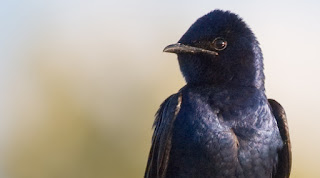 |
| ChatGPT Image of house finch with conjunctivitis |
If you feed birds or provide water, at some point, you are going to see sick birds.
A fellow birder mentioned this week she had some house finches with conjunctivitis, so had removed her feeders for a time, which is exactly what you should do.
How do you know you have sick birds? There are two primary diseases our birds get in this area that are very contagious between birds.
The first is conjunctivitis. This is prevalent in house finches (House Finch Eye Disease), but can be spread to other songbirds, such as gold finches, purple finches, and occasionally, grosbeaks.. If you are looking at your birds and they have crusty, runny eyes, this is conjunctivitis. Birds can't see well and the disease can cause blindness, if the bird isn't predated first. The bacterium that causes this disease is spread by direct contact between birds or contaminated surfaces (such as feeders). This disease can be treated fairly easily with the right medication. If you can catch the affected bird, you can take it to Wild Bird Rescue.
Another disease I haven't seen for some time primarily infects doves. You'll have doves sitting on your feeders just gorging themselves, but the bird will waste away because they can't swallow the food. You may notice the birds because it will stay fluffed up like it's cold. Trichomoniasis can be transmitted to birds of prey when the bird eats the dove. Infected birds starve or suffocate. This disease is not easily treatable and generally, birds are immediately put down because the disease spreads so easily.
What you can do. Keep your feeders and bird baths clean as a preventive measure. If you have seen sick birds, immediately take down your feeders and empty your bird bath. Thoroughly clean them, using a 1:10 bleach solution. Leave them down for at least 10 days. Why? You are basically allowing the sick birds in your area to die off to stop the spread of disease. If you put your feeders/bird baths back in operation too soon, any infected birds will once again contaminate your feeders and continue to spread the disease.
These diseases do not infect people.
.jpg)




_(5822528612).jpg)